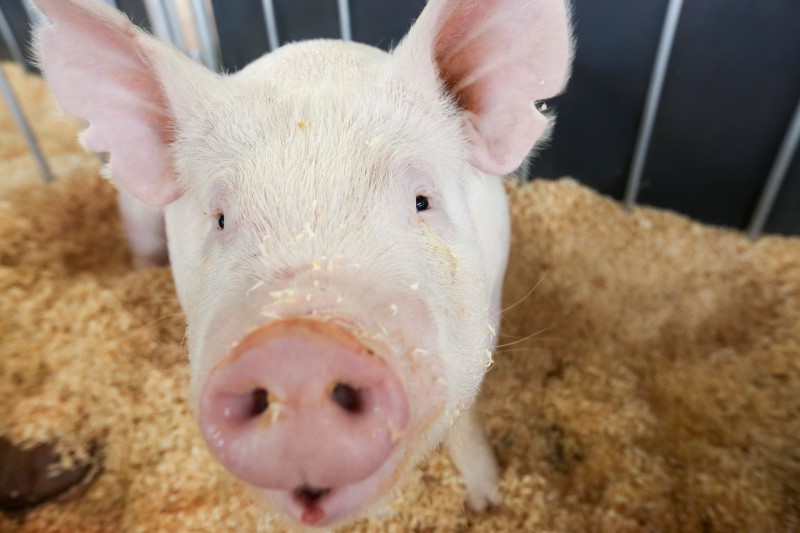* Herd expansion to keep lid on 2018 pork prices
* Robust pork demand needed to absorb herd buildup
* Report cuts both ways for hog futures come Friday
By Theopolis Waters
CHICAGO, Sept 28 (Reuters) - The hog population on U.S. farms during the June-August quarter was up 2.5 percent from a year ago, an all-time high for the quarter, according to Thursday's U.S. Department of Agriculture report, that suggests plentiful pork supplies ahead.
Affordable feed, good profits among farmers during most of the quarter and four of five new pork packing plants already up and running contributed to herd expansion, said analysts.
On the surface Chicago Mercantile Exchange lean hog futures LHc1 traders on Friday might view the data as neutral to mildly bullish because some of the results were close to trade forecasts, said analysts.
However, they cautioned that strong domestic and foreign demand is necessary to absorb the record supplies, which some investors might consider bearish for the market.
Nonetheless, consumers should benefit from the herd increase in the form of possibly lower pork prices through the first quarter of 2018, analysts said.
USDA's report on Thursday showed the U.S. hog herd as of September 1 at 102.5 percent of the year-ago level or 73.549 million head, the most ever for the September quarter since the government began tabulating the data in 1988.
Analysts' average forecast was 73.647 million head.
The U.S. breeding herd was 101.2 percent of the year-ago level, at 6.087 million head, up from 6.016 million last year.
The average trade forecast was 6.090 million.
The September 1 supply of market-ready hogs for sale to packers was 102.6 percent of a year earlier, at 67.462 million head, up from 65.770 million last year. Analysts, on average, had estimated 67.541 million.
Whether the report results are a half of a percent one way or the other, the data implies record hog numbers moving forward, said U.S. Commodities President Don Roose, who worries whether the resulting bump in pork supplies can compete with plentiful supplies of beef and poultry.
He attributed herd growth to favorable grain costs, good profits among hog producers prior to August and the prolong stretch of impressive packer margins.
Livestock Marketing Information Center director Jim Robb said farmers associated with the new packing facilities had an incentive to grow their herds.
"Clearly these producers affiliated with the new plants probably driving this (expansion) is the number one priority," said Robb.
The key issue, said Robb, is whether U.S. export markets can rebound from July's disappointing levels. (Editing by Diane Craft)
